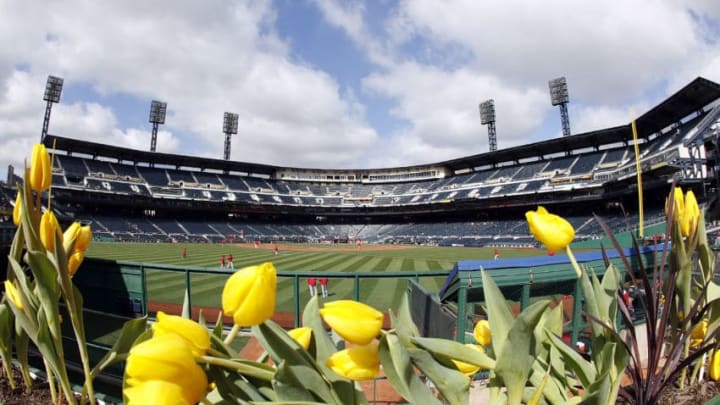The Pirates drafted Will Craig in 2016, noting his advanced bat and power potential. In his season and a half in professional ball, that power has not shown, and there is room for skepticism in Craig reaching that power potential.
Will Craig was an advanced bat coming out of Wake Forest in the 2016 draft. The then junior was coming off a season in which he hit .379/.520/.731, a strong season, and one that is almost a repeat of his strong sophomore campaign when he hit .382/.496/.702 for the Demon Deacons. This led to the Pirates drafting him with the 22nd overall pick in 2016, with Neal Huntington, via the Pittsburgh Post Gazette, saying,
"“The bat is obvious. We love the bat. We’re excited about the hitter, we believe there’s going to be raw power to come.”"
The raw power has yet to translate to the professional baseball, slashing just .274/.386/.368 in his first 186 games and 816 plate appearances. The Florida State League, which is the level in which Craig competed at in 2017, is known to suppress some power. In 2017, the average hitter was 22.7 years old, and the average slash was .250/.320/.360 with a .110 ISO. Though some of those players are prospects teams actually have a hope for, and others are org players, but the overall production in terms of power is low. Will Craig hit .271/.373/.371 with a .100 ISO, which was below what the overall league was in terms of power. For instance, the Pirates 2015 first round pick Kevin Newman hit .366/.428/.494 with a .128 ISO in the FSL, tearing up the league is something that you want to see from top prospects, especially college bats.
The transition to wood bats might be a reason for Craig’s struggles in 2016 when he hit .280/.412/.362, but he also struggled while playing with a wooden bat in the 2015 Cape Cod league where he hit just .242/.366/.318. The on-base ability that Craig has shown in the minors is there, but the power with the wooden bat was not. And the power will truly be the reason if Craig can contribute to the Pirates or not.
His on-base ability is there, he’s posted walk rates of 15 and 11.4 percent and on-base percentages of .412 and .371, though he was hit in 4.01 and 2.95 percent of his plate appearances. As Craig gets hit less, the on-base will certainly fall, but he should still be an on-base threat as he moves along. But it’s the power that will hold him back, especially as he’s been moved to first base. Prior to the 2017 season, this is the scouting report Fangraphs had on Craig:
"“This level of performance was not aberrational. Craig was also ACC Player of the Year as a sophomore and has a long track record of in-season hitting against large-conference college pitching (though he struggled to hit on the Cape in 2015 and in the Northwoods League the summer before that). For clubs that are more receptive to the warm embrace of on-field performance, Craig was one of the draft’s safer prospects.And, indeed, he does have many admirable offensive abilities. Craig has a terrific idea of his strike zone and takes excellent at-bats, his swing is relatively compact, the bat speed is fine and Craig can punish balls in various parts of the hitting zone and is especially adept at golfing out balls down and in. He has above-average raw power and projects as an above-average hitter.The offensive profile isn’t iron clad from a scouting standpoint. Craig’s struggles to hit and/or hit for power during summer ball and in his short pro stint after signing share a common thread: a wooden bat. I also had one source note that they thought Craig took an unusually high number of check swings in the series they saw, which made them question his pitch recognition.”"
Craig continued these struggles of hitting for power, and his ground ball rate jumped from 38.68 percent to 47.37 percent according to MLB Farm. This, perhaps, can illustrate the main reason for Craig’s lack of power, he’s hitting the ball on the ground far too often, especially in 2017. For Craig to really establish himself as a potential threat at the plate, he’ll need to elevate more, and given his stature of 6’3″ and 212 pounds, he has the size and strength of a power-hitting first baseman, he has still yet to unlock it.
Next: 2018 Prospect to Watch: Tate Scioneaux
He’ll be 23 years old and will likely start the season in Altoona, so he is still young, though at some point he must show the power potential that he has based on his performance at Wake and with his mechanics. It’ll be his second full season with a wooden bat, and he’ll likely be out of the FSL, which hopefully allow him to showcase that power more. There were Billy Butler comparisons for Craig in 2016 when he was drafted, and they still seem to fit him now, but it will all come down to if he can start hitting the ball for extra base hits, and more preferably, over the fence. The scouts seem to love the bat and the hitter he can become, and hopefully the numbers start to as well.
